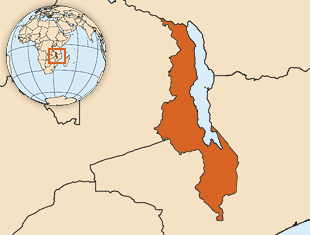Outreach
Outreach activities can help to maximize coverage of maternal influenza vaccination and are essential for reaching populations with limited access to health facilities. Outreach in this context refers to any strategy that requires health-care workers to transport and deliver vaccination services to a variety of sites (other than the normal outlets for vaccination) to target pregnant women. Outreach can be achieved through vaccination posts, specialty service sites such as HIV testing or treatment facilities, or through educational and work facilities, community centres, support or self-help groups for pregnant women, and other places where pregnant women tend to gather. If outreach is done through routine EPI, its outreach guidelines, targets and schedule will need to be adapted accordingly in order to align with the other services being utilized; equivalent documentation within the respective delivery system’s planning framework will need to be established in collaboration with the EPI manager.
In most countries, outreach activities are a routine part of vaccine delivery. These activities often contribute to meeting coverage targets and can improve equity of access for women living in remote areas or those in underserved or hard-to-reach groups. However, outreach can substantially increase financial cost. Where resources are limited, the use of a costing tool capturing the financial impact of outreach activities is recommended to help decide whether outreach can be considered as a complementary vaccine delivery strategy or if delivery should be limited to health facilities.

Malawi
While Malawi has yet to introduce maternal influenza vaccination, the country is often lauded for its success in implementing maternal vaccination against tetanus that affects both mothers and, through them, their infants.
Maternal neonatal tetanus was eliminated in Malawi over a decade and a half ago [29]. The Ministry of Health launched a national initiative, The “Road Map” for Accelerating Reduction of Maternal and Newborn Mortality and Morbidity in Malawi [30], which strongly promoted the utilization of quality antenatal care by pregnant women and supported the EPI guidelines for administering up to five doses of tetanus toxoid vaccine to pregnant women and women of reproductive age.
Malawi’s strategy to achieve high tetanus vaccination coverage is based on a strong emphasis on facility-based delivery, where tetanus vaccine is often integrated into routine antenatal care services. Providing these services in combination can be mutually reinforcing (e.g. saving time and effort for recipients and health-care workers, overcoming hesitancy of one service through perceived benefits of the other, and providing incentives to recipients if both services are received together). While the majority of maternal tetanus vaccination is provided in health facilities, the vaccination is also made available in communities through outreach services. These outreach sessions, which are largely provided by a cadre of paid extension workers (called health surveillance assistants, or HSAs) from the respective community, are combined with health services targeting children less than 5 years of age. The sessions are provided in communities at regular intervals (e.g. the first Thursday of every month) and in the same location (e.g. a church, school, or a shelter built specifically for the purpose).
The additional availability of health services close to communities, along with the familiarity of the HSAs and the regularity of the services, contributes to both acceptance and use, ultimately resulting in high vaccination coverage. In 2014, WHO estimated that 90% of pregnant women aged 15–49 years of age in Malawi received at least one protective dose of tetanus toxoid in their last pregnancy. This indicates that reaching a majority of pregnant women with tetanus toxoid vaccine in Malawi is feasible and acceptable.
Source: Formative research conducted by PATH and the Centre for Social Research, University of Malawi, through the WHO-PATH Maternal Influenza Immunization Project, 2015.
